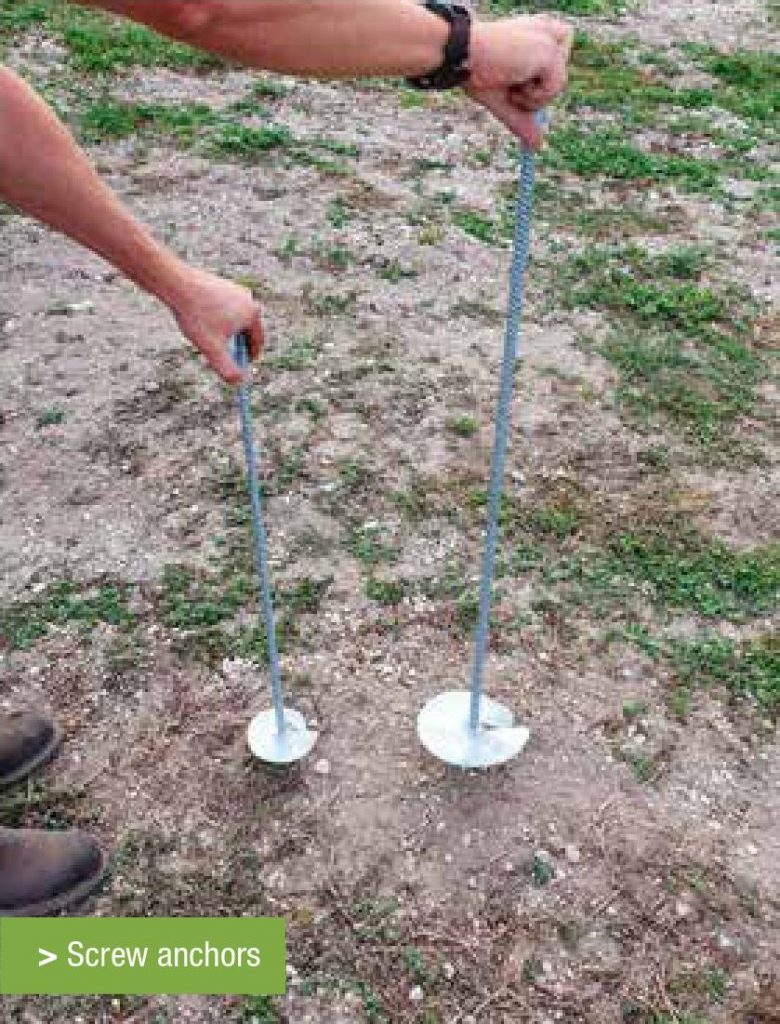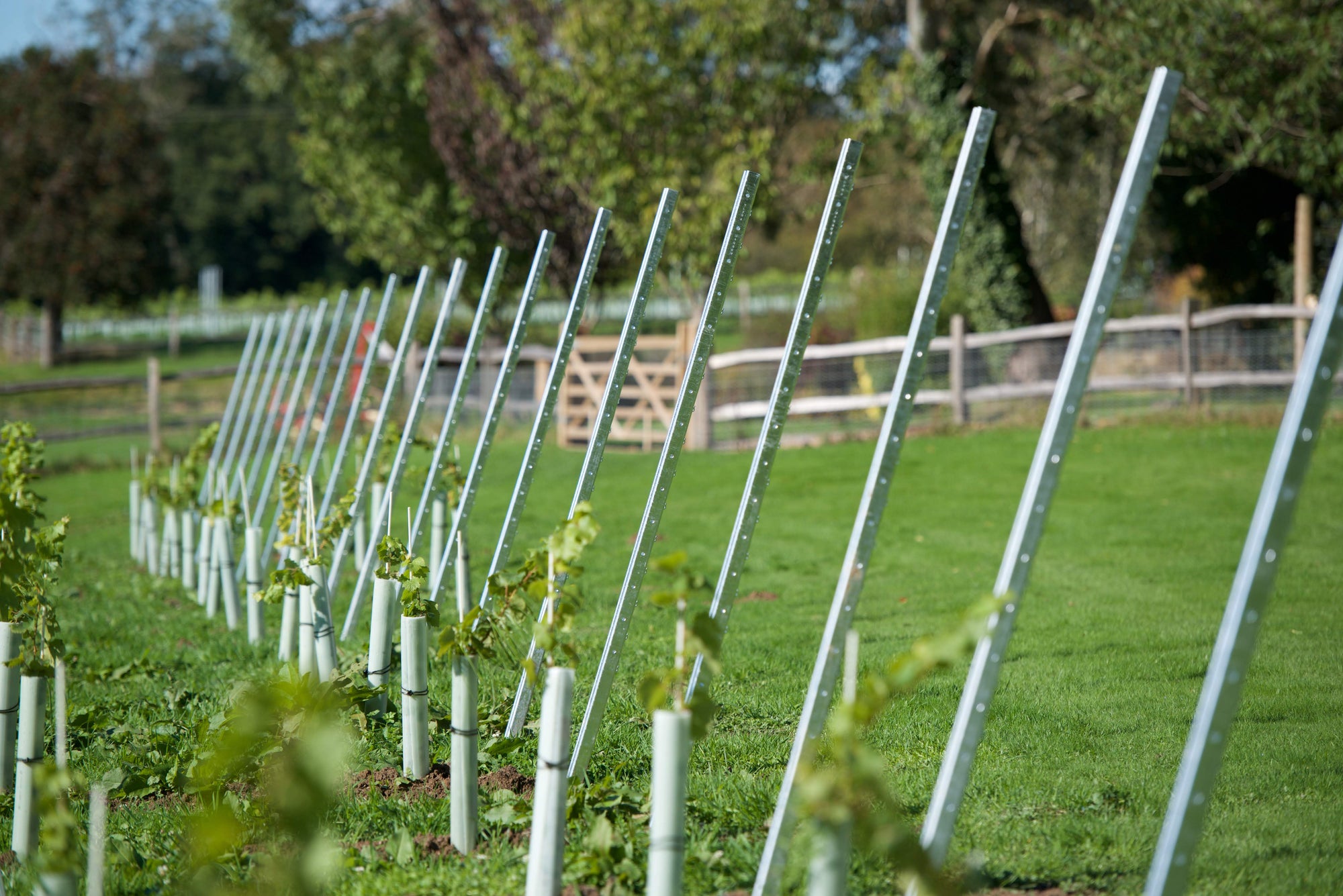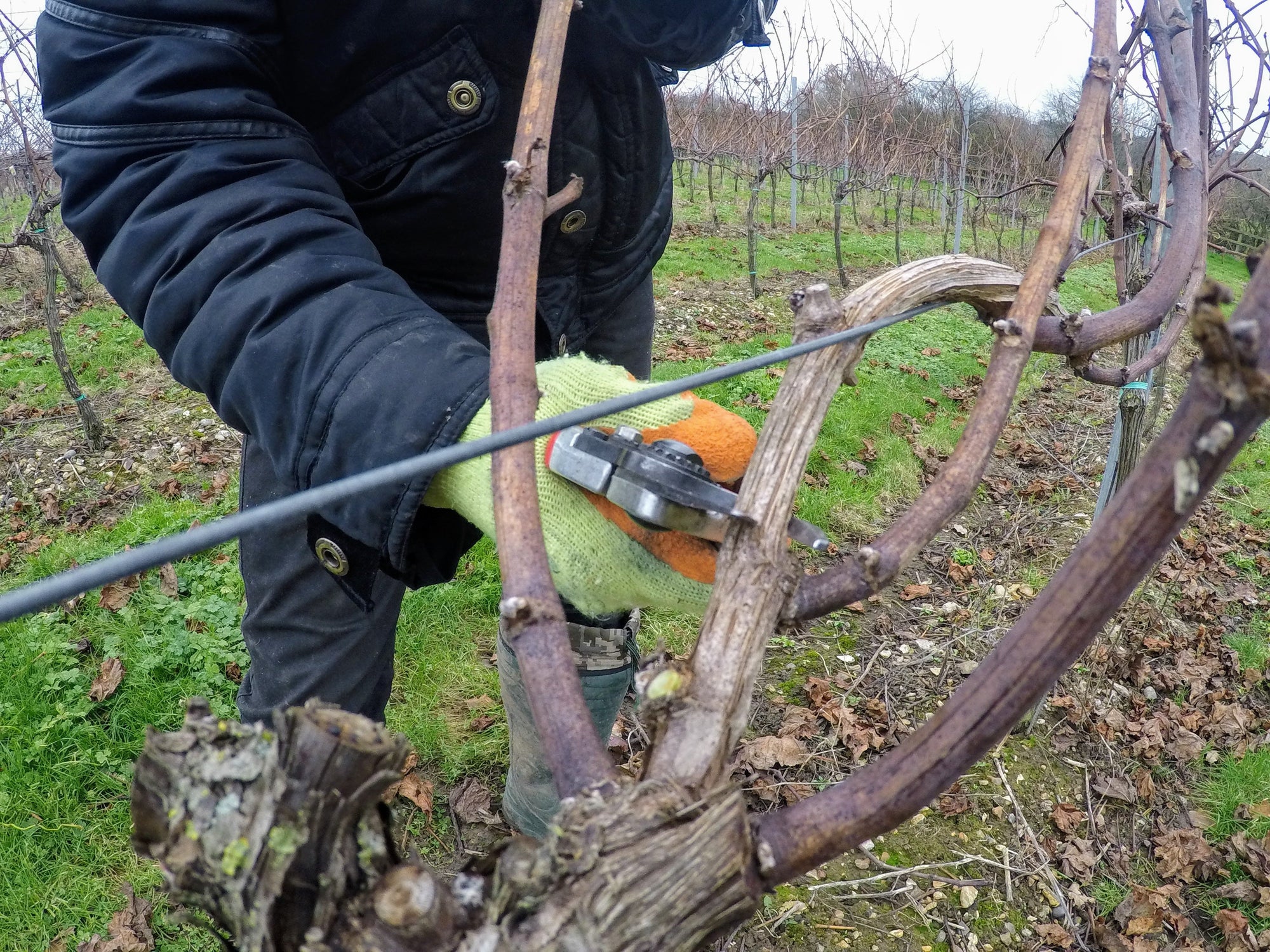usually purchased on price rather than its appropriateness to the job. The average modern vertical shoot position (VSP) trellis system will depend on a large end post inserted at a 20-degree angle and secured with a wire rope tie back from the top of the post to a ground anchor below. These end constructions will do most of the load bearing throughout the life of the system, while the intermediates will help spread that load across the row. At full yield the weight on the system can be enormous and will result in the system wanting to pull either end construction into the rows. This is where the appropriate anchor plays its role. The wrong anchor will begin to pull out as the weight gets heavier, and the end posts will move forward into the rows, slackening the system and ultimately it will begin to fail. To repair this will usually requires sacrificing the existing anchors and inserting new ones, as well as resetting the end posts, resulting in a repair cost that could have been avoided.
It is essential to choose the right anchor for the job, and in order to do this you must understand your ground type and matrix. There are a number of anchors on the market to choose from and each will perform differently in a number of soil types, or, in some cases, not at all. There are three main types of anchors: Screw anchors, Locking anchors (also known as Platypus anchors) and Fenox anchors. Each one is distinctly different and installed uniquely, requiring their own specific insertion tools. The screw anchor is simple in design, and relatively cheap and easy to insert and comes in a variety of lengths and sizes.
The principle is simple; they screw into the ground up to the entire length (usually between 85cm to 1m) and the size of the plate can alter from 8.5cm to 12cm in diameter. A longer and bigger plate screw anchor will perform well in deep clean clay soils and sandy soils with no stones or inclusions, while a shorter length and smaller plate will perform well in clay loams with some small stones and inclusions. They are not appropriate for soils over chalk or that have a high quantity of large stones mainly because you will struggle to get them in. Far to often we see screw anchors inserted only half their length because it was too hard to get them in all the way. Half inserted screw anchors will eventually fail under the loads as the design of the anchor requires it to be inserted up to its entire length to be effective: depth equals strength in this case. We have only ever seen screw anchors fail in a deep clay soil type because the ground became too wet over the winter, and drainage is the only cure for this scenario.
The locking anchor (Platipus style) is perhaps the most versatile of all the anchors available. There are two manufacturers in the UK, Gripple and Platipus, and come in different sizes depending on the soil type. They are inserted approximately 1m into the ground using a rod, and then pulled back by the attached wire rope to about 10cm until locked in place. They work by compacting the soil above the anchor, thus creating a solid barrier. The smaller size is excellent in chalk subsoils, or loams with lots of large stone inclusions and sandy soils, while the larger size, is more effective in clean clay loams. They are an excellent choice for soils where screw anchors are difficult to insert.
The Fenox style anchor is perhaps the least versatile as they are only appropriate in loams with gravel and stone inclusions. They work by driving a 80cm tube into the ground and then inserting a rod into the tube and forcing three wire spines out of the bottom of the anchor. They are not effective in clean clay loams as they will always creep up and out over time, and useless in chalk soils as they become damaged during the insertion process as it becomes impossible to drive out the wire spines.
Additionally, they require a number of specific insertion tools and are more expensive. Whichever anchor you decide on, make sure it is appropriate for your ground type as it has an important job to do in supporting your trellis system and ultimately must last the life of the vineyard.




